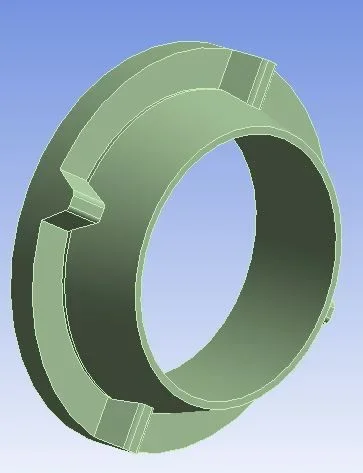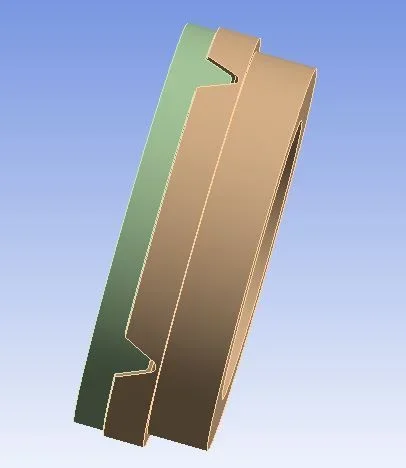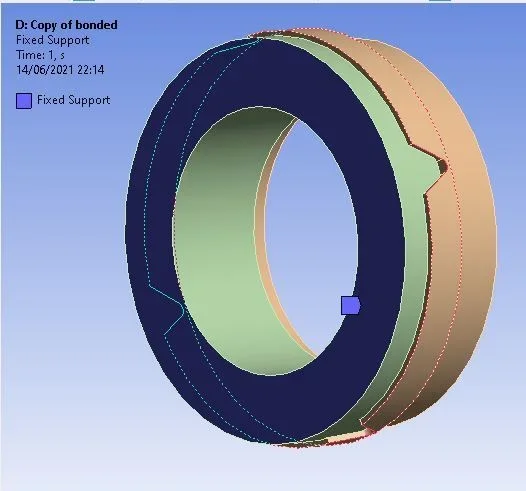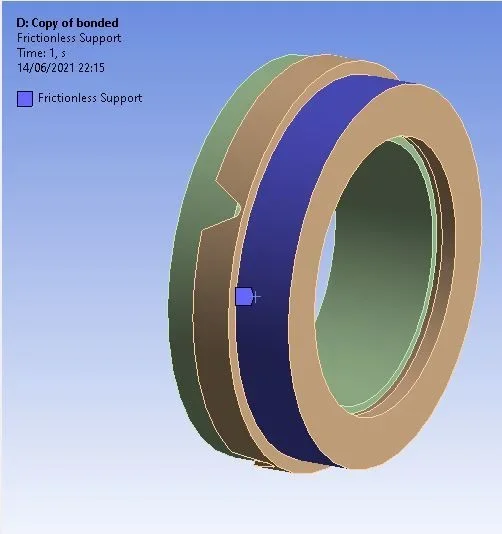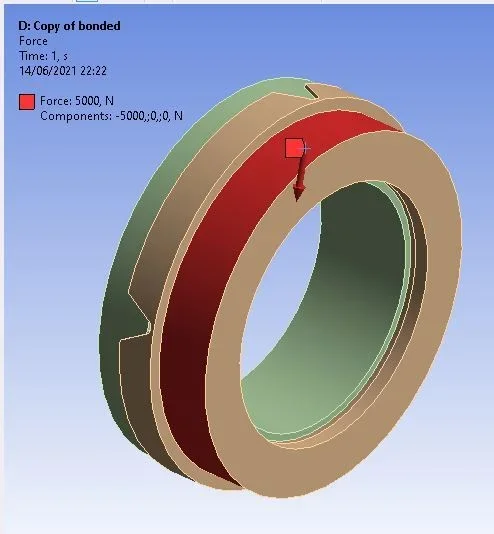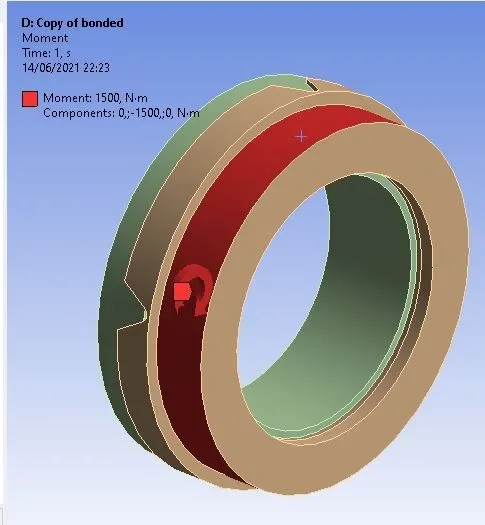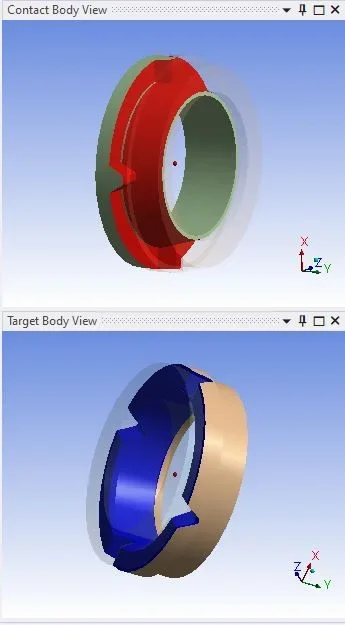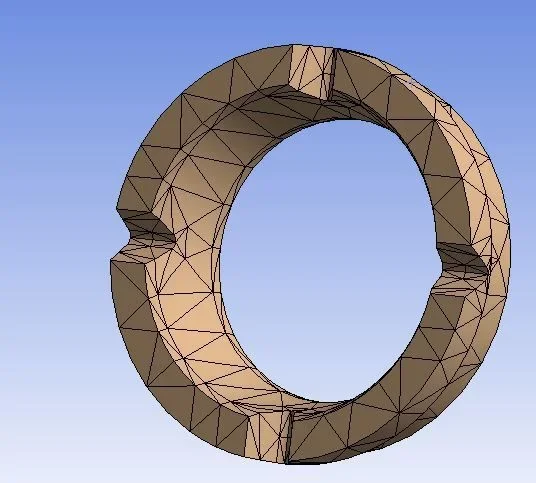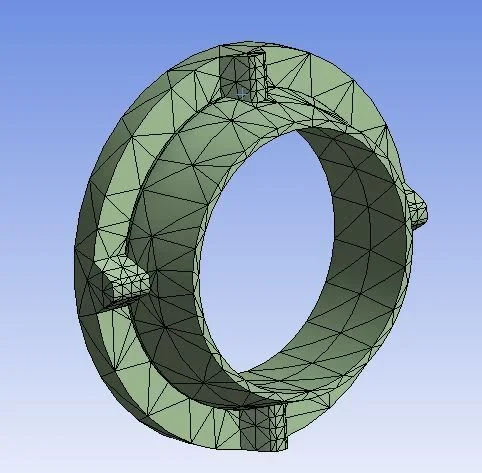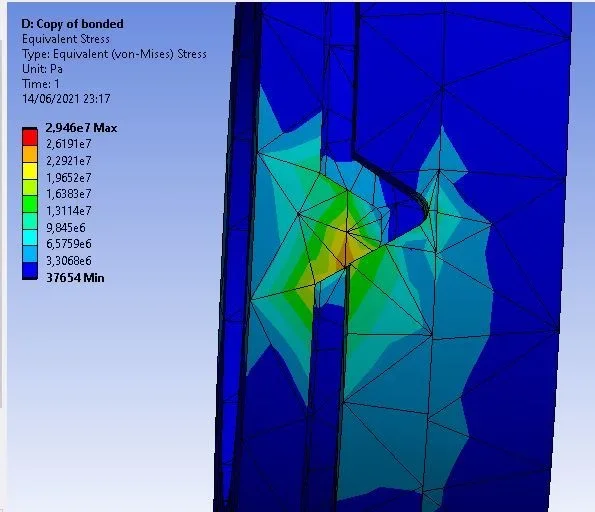Lillo86
Guest
Hello everyone,
I would like to ask you a possible problem in the contact study between two bodies. In particular, it would be a mistake on the calculation of the reaction force due to contact between the two bodies concerned.
as seen from the figures I have a "pink" and a flange that mate with each other through different conical surfaces. at the end of the pin there is a fixed support, while at the end of the flange there is a concentrated force and a concentrated moment that simulate the weight effect of a tree that is mounted on the flange and whose center is eccentric compared to the center of rotation. this tree is supported at the two ends by two "perno-flangia" couplings (however in the simulation I considered one pin, halving the weight of the mass to support, so as to simplify the model).
the contact bond has been assigned as follows:
- contact type = frictional
- pin = contact
- flange = target
- friction coefficient = 0.7 (steel vs steel)
- behaviour = symmetric
However, going to solve the model, I noticed a possible inconsistency. the total reaction of the moment evaluated to the fixed support is 1500 nm, exactly as the moment I applied to the flange; But the total reaction force is much lower than the 5000 n applied by me. what could be the reason for this discrepancy?
I would also like to ask you if you think it is appropriate to improve mesh and, if so, what strategy could I take to achieve the purpose
I would like to ask you a possible problem in the contact study between two bodies. In particular, it would be a mistake on the calculation of the reaction force due to contact between the two bodies concerned.
as seen from the figures I have a "pink" and a flange that mate with each other through different conical surfaces. at the end of the pin there is a fixed support, while at the end of the flange there is a concentrated force and a concentrated moment that simulate the weight effect of a tree that is mounted on the flange and whose center is eccentric compared to the center of rotation. this tree is supported at the two ends by two "perno-flangia" couplings (however in the simulation I considered one pin, halving the weight of the mass to support, so as to simplify the model).
the contact bond has been assigned as follows:
- contact type = frictional
- pin = contact
- flange = target
- friction coefficient = 0.7 (steel vs steel)
- behaviour = symmetric
However, going to solve the model, I noticed a possible inconsistency. the total reaction of the moment evaluated to the fixed support is 1500 nm, exactly as the moment I applied to the flange; But the total reaction force is much lower than the 5000 n applied by me. what could be the reason for this discrepancy?
I would also like to ask you if you think it is appropriate to improve mesh and, if so, what strategy could I take to achieve the purpose

